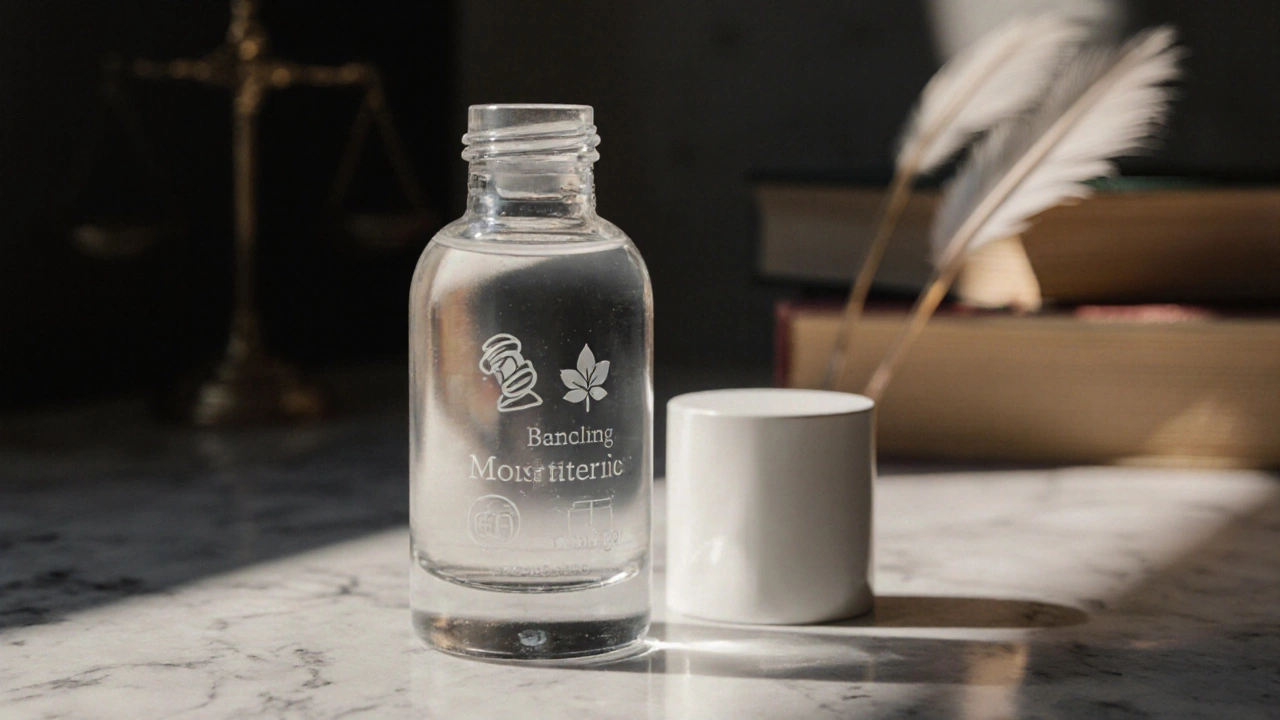Is a Moisturizer a Cosmetic? Answer & Regulation Guide
 Oct, 25 2025
Oct, 25 2025
Moisturizer Classification Checker
Check Your Moisturizer Classification
Enter product claims and active ingredients to determine if your moisturizer is classified as a cosmetic or drug under major regulations (US, EU, Australia).
When you reach for a bottle of moisturizer, you probably think of smooth skin, not legal jargon. Yet the question ‘is a moisturizer a cosmetic?’ matters for product labeling, safety testing, and even where you can buy it. Below we break down the regulatory definition of a cosmetic, how moisturizers fit in, and what that means for you as a consumer.
What a “Cosmetic” Actually Means
Cosmetic is a product intended to cleanse, beautify, promote attractiveness, or alter the appearance of the body without affecting its structure or functions. In most jurisdictions the definition excludes items meant to treat or prevent disease, which are classified as drugs. This broad phrasing covers everything from lipstick to shampoo, but the devil is in the details.
Defining a Moisturizer
Moisturizer is a skincare product designed to increase skin hydration, improve barrier function, and reduce transepidermal water loss. Typical moisturizers combine emollients with humectants and occasionally active ingredients like niacinamide or retinol.
Regulatory Views: US, EU, and Australia
Regulators don’t all speak the same language when it comes to moisturizers. Below is a quick snapshot.
| Region | Legal Definition | Pre‑market Approval? | Labeling Highlights |
|---|---|---|---|
| United States (FDA) | Cosmetic if it does not claim therapeutic benefit | No (unless a drug claim) | Ingredient list, warning statements if needed |
| European Union (EU Cosmetic Regulation) | Cosmetic when intended for cleansing, beautifying, or changing appearance | No (must be notified via CPNP) | Full ingredient INCI list, safety assessment report |
| Australia (Therapeutic Goods Administration) | Cosmetic unless it contains a therapeutic claim or regulated active | No for pure cosmetics; drug‑like moisturizers need listing | Ingredient list, batch number, TGA listing if drug |
When Does a Moisturizer Become a Drug?
Both the FDA and the EU draw a line at products that claim to treat or prevent a disease. If a moisturizer advertises “reduces eczema flare‑ups” or “treats acne,” it steps into drug territory. In the US that means a New Drug Application (NDA) or, for simpler cases, an over‑the‑counter (OTC) monograph. In the EU you’d need a cosmetic‑to‑medicinal product (CM) assessment.
Key triggers that change classification:
- Active ingredients that are pharmacologically active (e.g., hydrocortisone, salicylic acid above certain concentrations).
- Claims that address a health condition (e.g., “heals cracked skin”, “prevents dermatitis”).
- Recommended use as a prescription or dosage schedule.

The Role of Active Ingredients
Active ingredient is a component that provides a specific functional effect, often regulated separately from the base formula. In moisturizers, common actives include:
- Niacinamide - improves barrier and evens tone, generally considered a cosmetic ingredient.
- Retinol - anti‑aging, allowed in cosmetics up to 0.3% in the US, but higher concentrations may be drug‑like.
- Hydrocortisone - anti‑inflammatory steroid, always a drug.
Understanding these distinctions helps you read labels without a law degree.
Why the Classification Matters to You
From a consumer standpoint, a product labeled as a cosmetic generally goes through a safety assessment but not the rigorous clinical trials required for drugs. That means:
- Lower price points - you’re not paying for a prescription‑grade study.
- Faster market entry - new formulas can appear on shelves quickly.
- Potentially fewer efficacy guarantees - claims are limited to “helps moisturize” rather than “treats eczema”.
However, the safety net is still there. The FDA requires that cosmetics be safe under labeled or customary use, and the EU demands a documented safety assessment for each product.
How Brands Ensure Compliance
Most reputable skincare brands work with a Dermatologist or a certified cosmetic chemist to draft a safety dossier. The process typically includes:
- Ingredient inventory - each component is cross‑checked against regulated lists (e.g., EU’s Annex II & III).
- Toxicology review - assessing skin irritation, sensitization, and phototoxicity.
- Stability testing - confirming the formula remains safe and effective over its shelf life.
- Label audit - ensuring claims stay within cosmetic boundaries.
Brands that slip into drug claims without proper approval risk recalls, fines, or forced reformulation.
Practical Tips for Choosing a Moisturizer
- Read the ingredient list. If you see steroids, high‑strength retinoids, or acids above 2‑3%, the product may be a drug.
- Check the labeling language. Phrases like “helps improve the look of” are cosmetic; “treats eczema” is therapeutic.
- Look for regulatory symbols. In the EU, a “CPNP” (Cosmetic Product Notification Portal) number indicates compliance.
- Buy from reputable sources. Established retailers usually verify that a product’s classification matches its marketing.
Emerging Trends: Hybrid Products
The market is blurring lines with “cosmeceuticals” - moisturizers that contain higher‑dose actives like bakuchiol or peptide complexes. Regulators treat these on a case‑by‑case basis. In practice, if a brand markets the product as a “daily treatment” but only claims “visible skin smoothing,” it stays in the cosmetic lane. If they promise “reduces fine lines by 30%,” that could trigger a drug assessment.
Bottom Line
In most major markets, a standard moisturizer that simply hydrates and improves barrier function is classified as a cosmetic. The classification flips only when the product makes therapeutic claims or contains regulated actives. Knowing the difference helps you understand safety standards, pricing, and what to expect from the product’s performance.
Is a moisturizer always a cosmetic?
Most moisturizers that only claim to hydrate, soothe, or improve skin texture are classified as cosmetics. If the product claims to treat a skin condition or contains a regulated active (like hydrocortisone), it may be considered a drug.
How does the FDA define a cosmetic?
The FDA defines a cosmetic as any product applied to the body for cleansing, beautifying, promoting attractiveness, or altering appearance, without affecting the body's structure or functions.
Can a moisturizer contain active ingredients and still be a cosmetic?
Yes, many actives like niacinamide, hyaluronic acid, and low‑strength retinol are permitted in cosmetics, provided they stay within concentration limits and the product does not make therapeutic claims.
What labeling signs indicate a moisturizer is regulated as a drug?
Look for claims such as “treats eczema,” “reduces inflammation,” or dosage instructions. Also, drug‑like products often carry a National Drug Code (NDC) in the US or a TGA listing in Australia.
Do European moisturizers need a safety assessment?
Yes. Under the EU Cosmetic Regulation, every cosmetic, including moisturizers, must have a documented safety assessment and be notified through the Cosmetic Product Notification Portal (CPNP) before it can be marketed.
